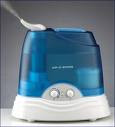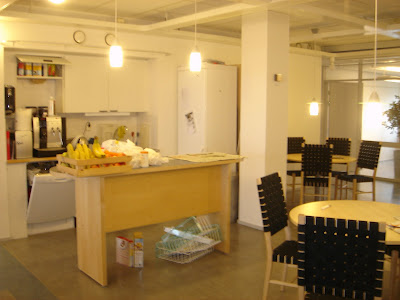|
|
|
|---|
|
|
|
|---|
Saturday, May 31, 2008
Ännu ett snyggt danskt hem...
Minhs vietnamesiska kokbok
This is a book by Minh Du Alneng about Vietnamese cooking (in swedish).

Friday, May 30, 2008
Har vi inredningsnördar en kula lös?
Ja, när man får lite perspektiv på saker och ting inser man att som inredningsnörd så har man nog en skruv lös.. eller en kula?
.jpg)
Enkla linjer
Tuesday, May 27, 2008
Uppfräschningsprojekt för Purple Area
Monday, May 26, 2008
Tine K igen
This is Tine K, which I have posted about several times before, but I just love their beautiful images. Note the black or white floor.







Sunday, May 25, 2008
Helvitt
No tiles. I like this bathroom in white with no tiles, just painted walls and (this is a guess) industrial painted floor. Images from photographer Rene Mesman.




Friday, May 23, 2008
Inspiration - trä
Wood can be very beautiful in a simple and pure way, and I very often get inspired in the same way as if it was a colour. Images from photographer Alexander van Berge.
Thursday, May 22, 2008
5 snabba till Ulrika Grönlund



I asked Ulrika Grönlund, one of the authors to the book 'Kreativa Kvadratmeter' five quick questions.
Wednesday, May 21, 2008
Chemiluminescence

Chemiluminescence
by: Gagandeep Dhaliwal
A glow stick is a sheer plastic tube that produces a brilliant light. A glowstick is also known as glow tube or light stick or glow light stick.
A glow stick is typically a plastic cylindrical rod about four or five inches (10 to 13 cm) long and less than an inch (2.5 cm) in diameter. The transparent stick contains two chemical fluids in two different compartments. The outer compartment of the tube carries one chemical fluid and the inner compartment carries the other. The inner compartment is brittle either made of glass or brittle plastic.
The inner brittle part breaks on bending the glowstick and helps inter mingling the two chemical fluids. A fierce chemical reaction takes place emitting bright light but not necessarily heat.
The glowsticks are used in the military, recreational driving at night, marching bands at night, entertainment parties, raves, concerts, dance clubs, Halloween eves etc. The glowsticking is the use of glowsticks in dance.
Chemistry:
The phenomenon of the chemical reaction in the glow sticks is known as “chemiluminescence”. The chemicals used to create the reaction in glow sticks are usually hydrogen peroxide and a mixture of phenyl oxalate ester and the fluorescent dye. The fluorescent dye gives the glow stick its color.
The outer compartment of the tube contains a mixture of the dye and a derivate of phenyl oxalate ester (cyalume) and the inner brittle part contains concentrated hydrogen peroxide.
A ferocious reaction takes place on mixing the peroxide with the phenyl oxalate ester. The ester is oxidized, giving out 2 molecules of phenol and 1 molecule of peroxyacid ester. The peroxyacid decomposes spontaneously to carbon dioxide, releasing energy that excites the dye that then de-excites by releasing a photon. The wavelength of the photon depends on the structure of the dye.
Different dyes can be used to produce different color lights. The 9,10-bis (phenylethynyl) anthracene gives green light, 9,10-diphenylanthracene emits blue light, 5,6,11,12-tetraphenylnaphthacene emit red light. The glowsticks dyes usually emit fluorescent light when exposed to ultraviolet radiation. Therefore even a spent glowstick shines under a black light.
The other chemicals used in glow sticks may include sodium salicylate as a catalyst, bis (2-ethylhexyl) phthalate (DCHP) as a solvent, bis (phenyl) oxalate, bis (2,4,5-trichlorophenyl-6-carbopentoxyphenyl) oxalate (CPPO).
The chemical reaction gets accelerated on heating a glow stick and the glowstick glows brighter, but for a shorter span. The cooling on the contrary decelerates the reaction that helps a sick glow longer, but dimmer.
About The Author
Gagandeep Dhaliwal owns the website http://www.glow-sticks.org/, a comprehensive guide on glow sticks, offering volumes of info and tips on buying glow stick, cheap glow stick, rave glow stick, giant glow sticks, military glow sticks etc. For more info on glowsticks, visit, http://www.glow-sticks.org/subcat/Glow-Sticks/.
|
Tips on Picking the Right Humidifier

by: Gary Nave
During the winter heating months in colder climates your home will need extra moisture. A humidifier replaces moisture that is lost from heating your home. The proper humidity is essential for your maximum comfort. Not enough humidity can cause itchy dry skin, stuffy noses, static build up, frizzy hair and a chilly feeling. The proper humidity is a personal thing. It is best to start around 60% and adjust up or down until you find the best comfort level for your needs.
So, what kind of humidifier are you going to buy? There are several things you need to know first before purchasing a unit. How much space are you adding moisture to? If you want to do your whole house and have hot air heat, I recommend having a whole house humidifier installed by a heating contractor. This type will connect to your water line and automatically add moisture to the heated air within your furnace.
If you only need to moisturize a few rooms or you do not have hot air heat, then a stand alone unit is required. There are 4 types available: evaporative, ultrasonic, steam, and cool mist. Here is what each type is good for.
Evaporative:
This is the type I prefer. Several gallons of water are stored in a tank in the unit. Water is pumped through a wicking material (should be anti-bacterial coated) and a fan quietly blows through the wet wicking material evaporating the water and adding humidity to the air. This type uses the least amount of electricity and provides 1-2 days before needing a tank refill. Larger console units of this type can allow you to go more days between refills. There is also a UV light option on some units that kills airborne viruses or bacteria that pass through.
Ultrasonic:
Ultrasonic units use sound vibrations to add moisture to the air. The draw back of this type of humidifier is that it leaves a white dust on every surface in your home. The white dust is minerals naturally occurring in your water. It is a real pain to clean up. If you want to prevent the dust you can buy distilled water which is inconvenient and expensive. I do not recommend this type of unit.
Steam:
Heater type units literally boil water into steam. They cost the most to run. No white dust is left behind because steam is pure water. A build-up of minerals are left behind on the heating element. These minerals can cause popping noises and inefficient operation. Removing the mineral deposits can be done by soaking the heater part in white vinegar weekly.
Cool Mist(impeller):
This is the type I remember my mom putting in my room when I had a cold. They are the least expensive units. They work by spinning the water into tiny droplets and blowing them into the air. For a few days use they are ok. Excess water can build up around the unit from unevaporated droplets so do not place it on wooden furniture.
I remember having to change a few wet socks from this extra water on the floor.
Overall the best type for long-term use is the evaporative wicking type. They cost the least to operate and do not leave white mineral dust everywhere, and only need attention every few days for water refills.
About The Author
Article written by Gary Nave of http://www.goto-humidifiers.com.
|
Improving your home and your life only at Home Improvement Idea : http://home-improvement-idea.blogspot.com
Overwintering the Garden Pond

by: Doug Green
It seems that there are always questions in the fall about winterizing plastic ponds. To begin with, clean out all the gunk (composed of fish and plant waste) at the bottom of the pond. Specialist garden catalogues have a little gizmo that attaches to a hose and when the hose is run, the gizmo acts like a vacuum cleaner, sucking debris from the bottom of the pond. Or you can put your pump on the pond bottom and point the discharge into the garden. If you don’t remove the plant debris, it will continue to decompose. Decomposition uses oxygen as one of its primary fuels and this means that oxygen will be taken from the water to fuel plant decomposition. If there is an ice-layer over the pond, and there will be shortly, the water will not be able to replace that oxygen and the pond will go into an anaerobic (without oxygen) state under the ice.
Now, you’ve never quite smelled something until you’ve taken a whiff of a pond that’s in that state. It is basically your very own backyard sewage system. Aside from getting rid of the smell, the reason you remove the bottom layers of material is so any fish you’re leaving in the pond will have enough oxygen to survive the winter. And survive they will as long as you stop feeding them when the water temperature is less than 50F. At that temperature, it is really too cold for them to feed and any food will simply rot. The fish will survive as long as the water doesn’t freeze solidly to the bottom of the pond. If the pond is three to four feet deep, it will not freeze and your fish will be fine. Shallower ponds will either have to have a bubbler, a pump left running to keep an open area open or the fish removed to an aquarium for the winter. But start with removing the gunk.
About The Author
Copyright Doug Green, an award winning garden author who answers pond questions in his free newsletter at http://www.water-gardens-information.com.
|
Improving your home and your life only at Home Improvement Idea : http://home-improvement-idea.blogspot.com
Kreativa Kvadratmeter
|
|
|
|---|



































